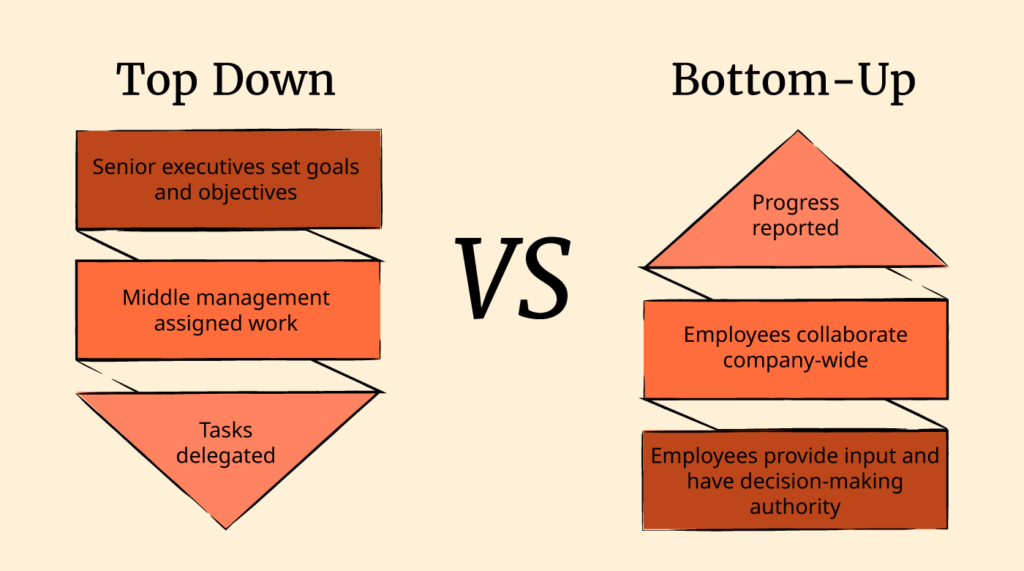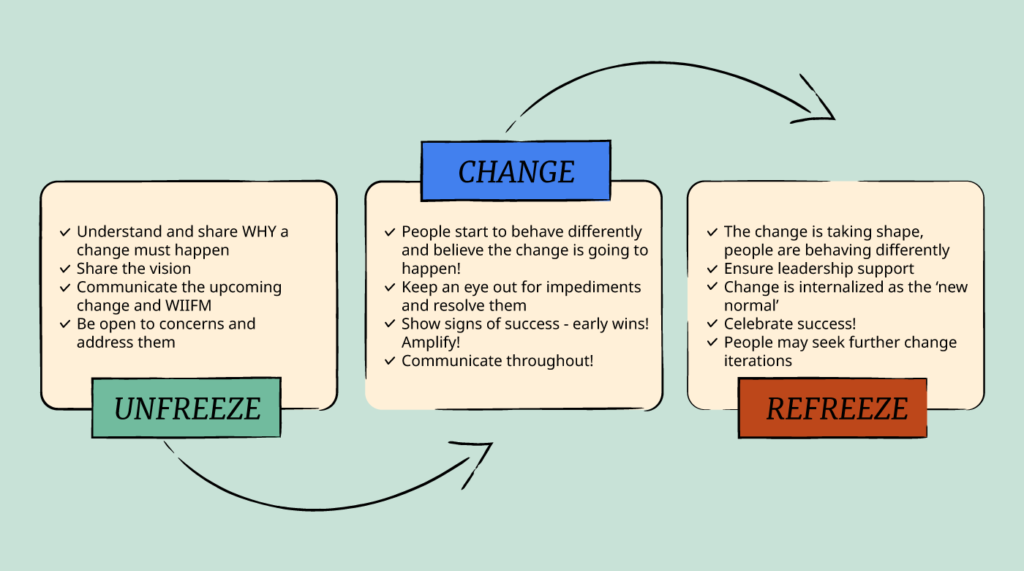Imagine you just started a new job at a company where most employees work from home. The company has been growing steadily and you feel you’ve joined a great team. You’re doing the work you like to do and your new team seems happy to have you.
You have been working from home for a few months and, unlike previous jobs, haven’t needed to fill out a time card or clock in and out to keep track of your hours. You have been getting your work done successfully and feel trusted in your role.
Then, one Monday, you sit down at your computer ready to get to work. You head straight for your inbox (bad idea in general, by the way) and you see an email announcing that, as of today, you must clock in and out of work every day online from your company-provided laptop.

After recovering from your not-so-minor freakout and flurry of self-doubt, you write a strongly worded response to the announcement email including the phrases “this is not what I signed up for” and “why don’t you trust your employees?”.
Yes, it is one of those emails that you should have maybe written but not sent… you can imagine how this all turns out.
What was the problem with this situation? Why would someone react so angrily to being asked to clock in and out? The answer to this is all in the way the change was communicated, implemented, and how it will be enforced.
Successful change leaders are those with the ability to mitigate freakouts and successfully drive change. Keep reading to learn this sneaky-smart superpower.
Where Is Change Coming From?
Change is happening faster than ever before, meaning it has never been more important to gain the skills required to become a skilled change leader.
Doing anything in a different way than previously is considered change. Don’t believe me? Try crossing your arms. Now, try crossing them again, but in the opposite way. Feels odd, doesn’t it?
Regardless of which change model you adopt, change can be considered top-down, bottom-up, planned, strategic, operational, directional, reactive, etc.
In general, though, there are 2-main differentiators that most people will recognize: top-down and bottom-up.
Top-Down Change starts from the top levels of the organization. Top-down changes are those that start with senior management.
Bottom-Up Change starts from the lower levels of the organization. Bottom-up changes are those that start with the workforce.

As a change leader, it's unlikely you will get to choose where your change initiative will start from. You’re either at the top and can drive top-down change, or you’re near the bottom where your passion and social network connectivity will allow you to drive bottom-up change… remember, in both, communication is key!
Top-down change
Is great for scenarios where critical decisions need to be made at the top. This includes change involving organizational structures, company financial goals, and quality initiatives.
Top-down change includes clear authority and decision-making across the organization, and decisions can often have a longer-term impact—especially when they're not associated with a single, specific leader (more on that later).
A leader can define a vision with a few key decisions and allow lower-level leaders to create the specific tasks and activities to achieve the change needed to meet the goal.
Top-down change is not great for scenarios where the team or lower-level employees know best, such as defining specific individual or teamwork processes.
Bottom-up change
Is an effective way to get things going among middle managers or lower-level employees. Often, senior leaders don’t understand the lower-level work enough to drive impactful change in designing an effective work process, so bottom-up change is best to address these scenarios.
Bottom-up change gives a voice to regular employees. However, for a change to be long-lasting and widely impactful beyond lower-level work, it will often need to be acknowledged by senior leadership.
Another thing to consider when working in bottom-up change is if the change treats the root cause of an issue or is simply addressing a symptom. Always try to go for the root of an issue, or upstream for the most impactful, deeply meaningful change.
Planning For Change
As humans, we all react to change relatively similarly, even across change types. Being able to predict reactions and next steps is the difference between a freakout and a well-navigated change that others accept.
Successful change leadership means providing people with enough information to understand what’s going on, building confidence that the change is the right thing, and then making the right thing easy.
Change of any type can be broken down into a few stages and numerous scholars have dug in on change management in great detail with various models, checklists, must-haves, and do/do-not lists.
A simple change model that is covered in HRCI SPHR certification material Kurt Lewin’s 3-phase model of change:
- Unfreezing - breaking the status quo and introducing a change
- Changing - actually executing the change
- Refreeze - locking the change in place as the new normal.
The below diagram outlines each stage and a few key activities that you need to consider as a change leader.

Such models are helpful but, across groups, are only helpful when there is shared understanding and a language to talk about our reaction to change and what we can do to help others navigate next steps.
Pro tip: when leading groups through change, start by teaching the change team the model you will be using to frame the change. This way everyone has a shared understanding of the path to “the new normal”, can communicate clearly what stage of the change process they think the change is in, and knows what the group can do to help facilitate effective movement through the stages to achieve the change goal.
Regardless of the type of change, communication is key—at all levels. Transparency, inspection, and adaptation throughout a change will drive the highest satisfaction throughout.
Everyone in the organization has a voice, and it is your job as a change agent to find ways to solicit feedback and incorporate the needs of others into your change plans.
Extra Credit: If you want to dive into specific change models, here are some of the most commonly-used models in our current time:
- Lewin’s Change Management Model
- The ADKAR Change Management Model
- Kübler-Ross Change Curve
- Satir Change Model
- Kotter’s theory
- Deming Cycle (PDCA)
Executing Change
Slowness to change usually means fear of the new.
Philip Crosby
So you’ve decided to lead a change! Congratulations. Change leadership is not for the faint of heart. This will test your leadership skills as humans don’t like to change. In fact, we’re are naturally resistant to it. It's your job as a change leader to make the change easy, frictionless, and beneficial for all involved.
First thing, you need to select a model to frame your change. Pick a model you're familiar with or that you understand and can teach to others. Next, form your change leadership team (people that will be involved with implementing the change) and teach them the model as well.
Now you have shared language to talk about the challenges that lie ahead. Gather your change team and build a shared vision for the future.
Top-down change often includes a rather short, simple visioning period as the vision and goals of the change are set forth—typically by one or few senior leaders. Work with these leaders to develop a vision for the change that is realistically feasible and has clear benefits to both employees and the company.
If you can’t see a clear benefit to employees, look deeper. A great way to uncover potential benefits and impediments to successful change is to gather a group of employees that represent a cross-section of the population and pitch the change to them.
Ask them what they think will go well, what is any potential for disaster, and what’s in it for them. This session is critical to understanding what resistance you will face when implementing your change, as well as what the impacted groups won’t mind or are excited about.
Bottom-up change comes with a different set of challenges, many of which stem from gaining buy-in as the change attempts to climb up the levels of the organization from the bottom, or from the non-leader group that is driving the change.
Bottom-up change takes a considerable amount of time, much more than top-down change, as people impacted by the change need to socialize, educate, and build commitment for the change before it can begin a climb to leadership and realization of the change.
With that said, the beauty of bottom-up change is that, often, the people doing the work at the lower levels of the hierarchy have a keenly unique perspective and understanding of the issue that created the need for change, and have the right lens to create a solution that is more effective and long-lasting than if created in the top-down approach.
Both top-down and bottom-up change can be effective, depending on the circumstances. In both, buy-in for the change is necessary and communication is key. Change requires people to adapt their behavior.
If you want to be successful in driving a behavioral change, everyone needs to know what’s going on, why something is happening, and the right thing needs to be made to be the easy thing. This is the key to driving real, long-lasting, and effective change.
Leverage a Change Champion Network
When you have tested your change and are looking to scale it, you will need representatives of the people impacted by the change to help scale your change quickly.
You need Change Champions. Change Champions serve as supporters and a feedback mechanism throughout the group impacted by the change. Behavioral change is best supported through social networks and personal relationships.
Many employees won’t say what’s wrong with a change plan to their manager, but they might tell their friend who happens to be a change champion. The change champion can then bring that feedback to the change leader which can be assessed and incorporated to improve the change.
Many successful organizations have a permanent Change Champion Network (CCN) with members nominated by peer groups and rotating every 4-12 months. These groups meet monthly and discuss upcoming or recently implemented changes and how they are being implemented, perceived, and accepted by the organization.
The CCN group may then learn of upcoming changes including systems changes, org restructures, benefits adjustments, etc., and be asked for feedback. This group, if trusted and leveraged correctly, can be a game-changer for a change leader’s ability to scale change.
Tips to increase speed
Change leaders looking to increase speed don’t only need to drive change faster, they also need to manage the expectations of leaders. One of the most common complaints I hear from leaders is about the speed of change. I often hear off-the-cuff comments like:
- “How can we get people to change faster?”
- “Why don’t they just get it?”
- “Why are we still talking about this?”
Truth is, leaders are often much farther ahead and on their way towards believing in the “new normal” than those that are most impacted by the change.
Especially in top-down change, leaders ideated the change, decided on it, asked others to implement it and, in their mind, it's happened and any further behavior not aligned with the future state they dreamed up is insubordination. “How can it be taking this long??”
Here’s what to do:
- Share the problem driving the change and what you’re considering doing about it
- Share your ideas for the change and solicit feedback from the impacted group
- Adapt your change plan based on the feedback collected, share the change plan and acknowledge the feedback received, indicating the impacted group is part of the change
- Test the change. If you can, run a pilot. Celebrate success publicly
- Communicate the problem, what’s driving it, what you tried, and what happened. Share that the solution will be expanded beyond the pilot or test group including when and how
- Implement change more widely.
You may have noticed the path to implementation is not a linear path, and communication is included in every step. People are more resistant to change when they don’t know what’s going on, don’t have advance notice, or don’t understand why the change was needed in the first place. Each of these blockers is avoidable with communication. Communicate, communicate, communicate!
Tips to scale
When looking to scale change, consider implementing or practicing the following best practices:
- Communicate early and often
- Ensure everyone understands the key challenge and WHY behind the change
- Solicit feedback and incorporate it into your plan, address any fears
- Mitigate any risks that are deemed unavoidable, communicate the mitigation plans
- Run a pilot or a small experiment for the change. When successful, communicate the success, showcase the experiment and honor those who contributed
- As the change expands, hold ceremonies or launch activities along with any required training to mark the shift in expected behavior
- Celebrate any and all successes. Honor those involved.
- Perform a retrospective to document key insights which can help drive the next change to be even more successful!
When scaling, here are a few things you should absolutely avoid:
- Expecting people to know what’s going on without informing them multiple times
- Expecting people to behave differently if they don’t understand why they should
- Expecting change to happen overnight, because you said so
- Expecting change to go smoothly without any issues or objections.
Change is difficult and is happening more often and faster now than ever before in our history. Becoming a skilled change leader is a key competitive advantage in your career. If you can lead people to adapt their behavior, you are steps ahead in building your organizational influence.
Learning More
I hope now you're feeling more confident about what's required for effective change leadership and the process for leading change successfully.
If you're excited to learn more about change leadership, and how to navigate the often murky waters of leading people towards outcomes, check out this list of change management books and change management podcasts.
I’ve personally read many of these and can attest to their helpfulness and inspirational qualities. In fact, much of the wisdom shared here is a combination of the key messages from those resources—it’s worth the time!
Some further resources to help:
- What Is Adaptive Leadership And How Do You Practice It?
- Leadership Coaching: Become A More Rounded Leader
- Best Strategic Planning Software for Planning Ahead
- HR Change Management: Effectively Lead Change As An HR Professional
- Clarity, Responsibility, And Accountability (CRA) Model Of Leadership
- Transformational Leadership: How To Inspire Others To Be Better
- 11 Leadership Models To Help You Become A Better Leader
- 13 Best CHRO Conferences to Help You Lead HR Teams in 2024


